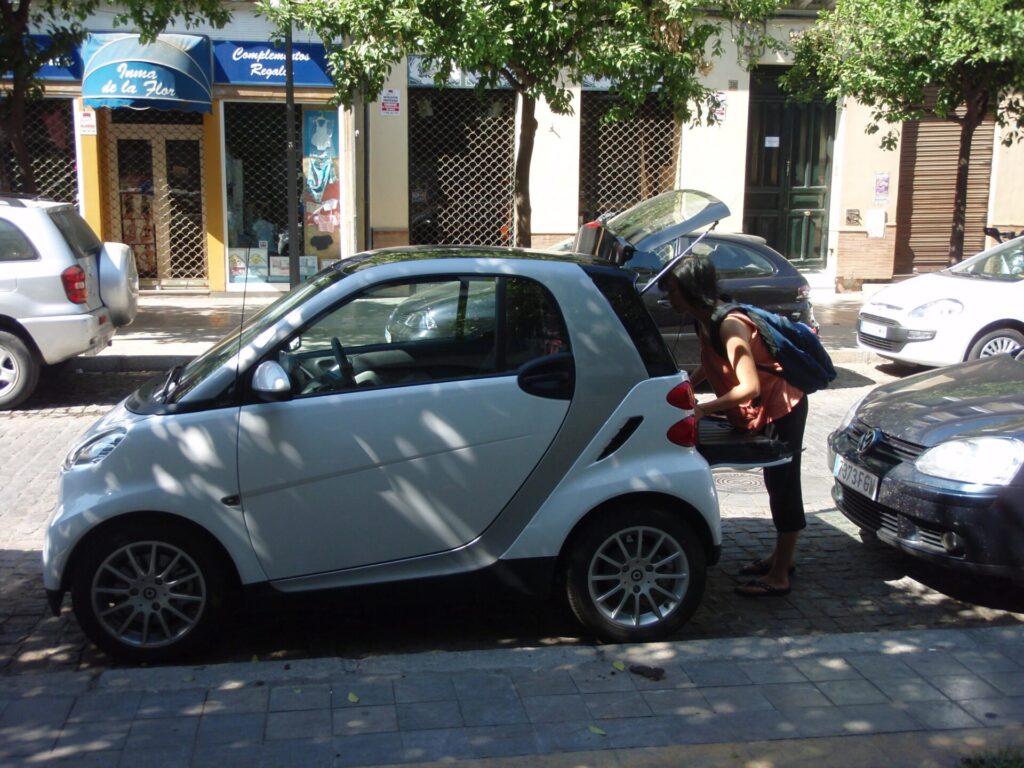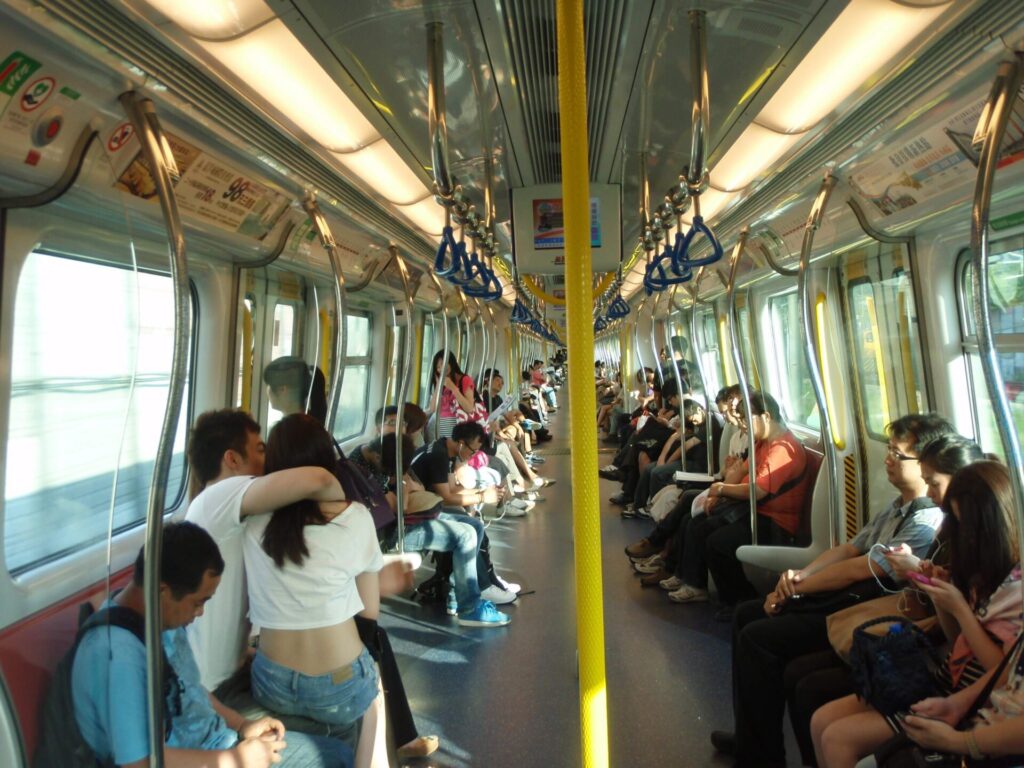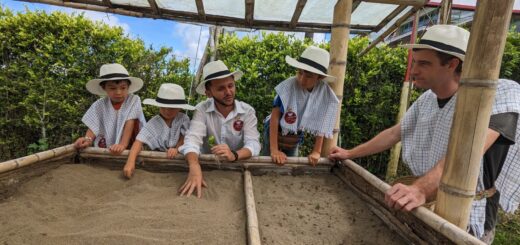12 Ways to Travel More Lightly on the Planet

So, you want to see the world, but feel bad because flying is a major source of carbon emissions. Making up 2.5% of global carbon output, flights often are the biggest part of an individual’s carbon footprint, especially if you fly frequently. Over-tourism is also damaging some of the world’s most popular sites, like Peru’s Machu Picchu. This presents a dilemma for those of us who want to be part of the climate solution, yet value travel for the personal growth and cross-cultural benefits.
Traveling with children also makes eco-friendly travel more challenging (but not impossible!). You can’t be quite as flexible or bare-bones when you’re considering children’s needs and lower tolerance for discomfort. Convenience becomes a bigger priority. Two-hour plane ride or 20-hour train ride with three pawing, antsy, small humans who have a tendency to whine? We can sympathize when the frazzled parent navigating a foreign country goes for the first, though less climate-friendly, option.
Here are some strategies we’re using to travel more lightly on the planet as a family. We’re implementing them for our family gap year as well as shorter domestic trips. Some of these are philosophical attitudes, which will lead to practical changes, while others are straightforward tips that you can use right away.
1. Cultivate an attitude of flexibility
My therapist recently introduced me to the term “rock brain.” It’s a helpful, concrete way to talk with kids about our tendency – as children and adults – to get stuck in our expectations and frustrated when things don’t go our way. “Mama’s feeling frustrated because we’re going to be late. My rock brain is making it hard for me to think of how we can still have a good time if we don’t get on this train and have to take the next one.” When we name the ways we all get fixated on one way of doing things, whether that’s traveling, celebrating a holiday, or simply hanging out as a family, we then open the space to explore other ways.
Before we can even begin to reimagine travel that could be good for the planet, we have to cultivate an attitude of flexibility. A family conversation might start like this: “Maybe flights are the expected way for a middle-income American family to get from point A to point B. But we’re going to explore other ways. We’re going to be curious and open. It’s okay if it takes longer or there are some stops along the way. It’s part of the adventure.”
You can begin by cultivating flexibility in daily routines and small trips. Talk to your kids about developing “frustration tolerance” when an anticipated activity gets canceled or they can’t have their favorite dessert. When we learn how to roll with changes in everyday living, it can be easier to make bigger changes down the road.
2. Learn about a place’s history, including indigenous rights, land use, and environmental challenges
Unfortunately, modern tourism is a mostly-superficial experience of cruises, all-inclusive resorts, and sightseeing that rarely puts travelers in contact with the local people and a place’s deep history. If we’re going to travel in ways that actually benefit the places we visit and the people who live there, we need to go deeper.
For worldschooling and homeschooling families, going deeper can be a natural part of the travel experience. You can build in these questions into conversations about each new place:
- Who lives here, and why?
- Who used to live here, and what happened to them?
- Who is in control, and how did they get in control? How are they running the place?
- How is this place different from other places we’ve been?
- What do you notice about the land? Is it city, country, farmland, forest? Why is it this way? What needs are being met, and whose interests are being pursued? Whose interests and needs aren’t being addressed?
- How is tourism affecting this place? How is our presence affecting this place?
3. Plan for slower travel and longer stays
It’s customary for American travelers to take their two-week vacation, cram as much as possible in, and jet out. But that isn’t great for the environment. When we’re trying to do everything within a short timeline we end up going with the more convenient options: flight instead of train/boat/bus, chain hotel instead of local homestay, etc. Going slower and staying longer gives us more opportunity to explore other modes of transportation and other possible activities, such as volunteering (see tip #11). It also translates to a deeper, richer experience.
4. Plan routes carefully and lump destinations to avoid criss-crossing
The climate scientist Katharine Hayhoe is frequently asked to speak at events around the world. Rather than accept each request as it comes, she and her team collect invitations 12-18 months in advance and then strategize to schedule multiple events in the same general area to minimize her carbon footprint. We are not all sought-after speakers, but we can use the same strategy to plan our own small and large trips. We can combine errands across town. We plan for a longer-term stay in one area to visit multiple surrounding countries.
5. Explore alternatives to flying
Flying is generally the biggest source of long-distance transportation emissions, so it’s worth exploring other options. As this BBC article breaks down, it’s a bit more complicated than saying “don’t fly at all.” Solo driving in a non-electric car emits more carbon per person than flying in a nearly-full plane, but adding just one car rider tips the scale to make driving more climate-friendly. Trains tend to be the most sustainable option, especially newer, more efficient kinds. Buses can be a wash compared to flying, especially if they’re older.

Traveling by boat was highlighted when Greta Thunberg took a racing yacht across the Atlantic to attend a UN Climate Summit in New York in 2019. The 3500-nautical-mile trip was carbon neutral and took 15 days. However, not many of us will have access to racing yachts, and cruises can have just as much environmental impact as flights.
You’ll have to do your own trip-specific research and get a little creative. You might even consider more out-there options if your family is up for it, like sailing or horseback riding. You could even hike short distances from one place to another if you have older kids who can carry their own packs! Sometimes entire destinations revolve around a trail, such as the Camino Real in Spain and the Appalachian Trail in the United States.
6. In cities, make public transit an adventure
I always feel like I’ve mastered a city when I get the hang of the public transportation. From the MTR in Hong Kong, to the “El” in Chicago, public transit offers a cheap, flexible, and generally less carbon-intensive way to see a city, especially parts that are off the tourist grid. For kids, taking public transit can be a valuable exercise in planning, navigation, and time management. Approaching public transit with a sense of adventure – expecting surprises and delays – can make it fun rather than stressful.

7. Bring reusable gear
We tend to consume a lot of disposable things on the road – takeout boxes, plastic bags, water bottles, plastic cutlery, single-use Keurig cups and shampoo bottles. Plan to bring your own reusable gear, from fold-up cloth bags, to metal travel chopsticks, to bar shampoo, to water bottles. Of course, in some places you can’t drink tap water directly and have to resort to bottled water. If you’re staying for a longer period, look into services that deliver filtered water in large jugs that will be reused. Ask your hosts if they would consider installing a filter on their own water system, and – if you have the wherewithal – offer to help offset the cost and install it! For our family gap year, we are using this portable water filtering system to avoid buying tons of bottled water in places that don’t have safe drinking water.
8. Offset your carbon emissions
The ultimate goal is always to reduce emissions, but in the meantime we can offset what we can’t reduce. Carbon offsets are investments in projects that reduce or draw down greenhouse gases, like forest preservation or planting trees. There are many emissions calculators out there which will give you a dollar amount carbon equivalent for whatever trip you plan to take. You then take that amount and donate to offset projects. I recommend this Climate Stewards program sponsored by the Christian conservation group A Rocha International (full disclosure: I am a board member of A Rocha USA).
9. Support local businesses, especially environmentally-friendly ones
It’s hard to take care of your local ecosystem when you’re just struggling to survive. Locals have the intimate knowledge of the land and the social connections needed to spearhead meaningful change in their communities, but often don’t have the resources. We can empower local-led environmental change by supporting shops, lodgings, and restaurants that keep money in the community. Certainly, transnational companies like hotel chains provide jobs for locals, but don’t usually have good track records for worker rights, livable wages, and environmental impact.
When people can make a decent income, they finally have the ability to deprioritize profits over ways of doing business that are kinder to the ecosystem. People who live in a place are the most invested in seeing it thrive.
10. Support Ecotourism
Ecotourism, which focuses on conserving and offering experiences in natural areas, is a growing part of the tourism industry as more people choose to travel in ways consistent with their values. We want to protect ecologically-diverse and fragile areas for future generations. We want more of these areas. We want local communities to flourish. Ecotourism shows that communities can keep their forests and other natural gems instead of clear cutting them for farms that grow commodity crops.
One of the most memorable ecotourism sites we visited was Kasaguadua Natural Reserve, near Salento, Colombia. The co-owners used their own funds to purchase a corridor of land between two protected areas so wildlife could pass through. Previously farms, the land is now returning to forest. Kasaguadua hosts scientists studying forest regeneration, guided tours, and volunteers. Visitors can stay at several of the elevated pods, made with recycled plastic and bamboo harvested on-site. We learned so much on the tour and can’t wait to return to stay in the pods.
Unfortunately, the rising demand for ecotourism has spawned greenwashing of already-existing profit schemes that may be less than beneficial for local habitats and communities. Be sure to do your research when exploring tours, hikes, and other local experiences. Note who runs the business and where the money goes – is it being reinvested into the ecosystem and community? Also leave reviews on sites like TripAdvisor when you do go on tours so future travelers can be informed.
11. Volunteer with groups doing sustainable work
One of the benefits of traveling long term is that we can get meaningfully involved in a community. On our family gap year, we plan to stay at sustainable farms and volunteer with reforestation efforts and environmental cleanups. Centering our travel around work with local-led environmental groups makes it less about what we can get out of a place and more about how we can benefit the places we visit.
You might not be in a place long enough to figure out how you can offer your time and talents. But simply learning about the larger issues and systems that affect an area – as we did on our tour through Kasaguadua Natural Reserve – equips you to talk about and advocate for these issues throughout your travels and when you return home.
12. Talk about it
The most important thing you can do about climate change, according to climate scientist Katharine Hayhoe, is talk about it. Why? Because we humans are social creatures who take our cues from others. If no one is talking about their environmental concerns, voicing eco-grief, or bringing up climate change as a factor in decision-making, then no one else thinks it’s a big deal. We go about our business as usual.
Harvard researcher Erica Chenoweth has found that it takes 3.5% of a population to be actively engaged in any given issue – speaking out publicly, resisting oppressive systems, exerting political and social pressure – for the tide to turn. That may seem like a lot or a little, depending on your perspective. But with 3.5% on board, governments shift. Societies evolve. Change happens.
So if you care about the planet, and how tourism affects it, talk about it. Share your travel philosophy with family members and friends as you’re planning your trip. Talk about your concerns with others you encounter while traveling. Connect with other families who care about responsible travel. In the process, you’ll change perceptions of what’s socially acceptable and “normal.” You’ll give permission for others to make changes in their own lifestyles and travel habits.
When we travel, we are not just individuals going out for fun, making decisions in a vacuum. We are part of complex systems that sometimes benefit, but often harm, the earth. How can our travel be not just for our own pleasure and entertainment, but enrich our lives as humans living together on this planet? How can we leave the places we visit better?








Thank you for the practical and thought-provoking travel tips!
Thanks for reading, Lori!!